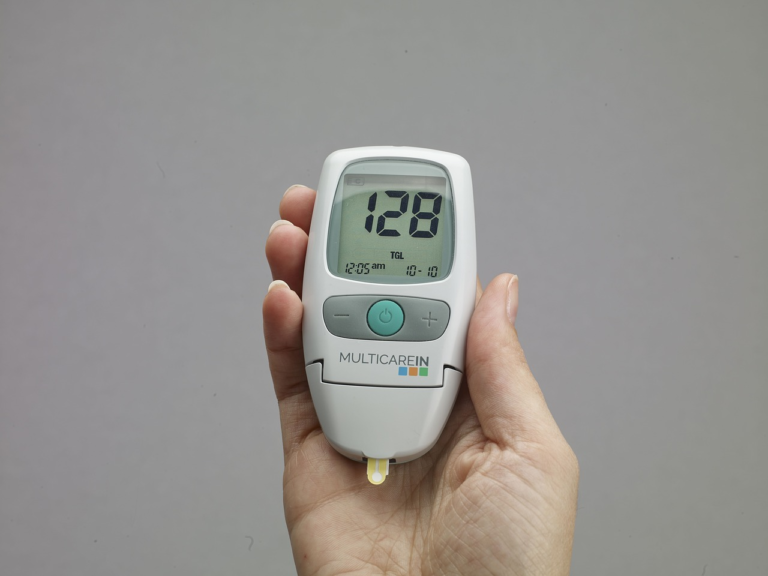Breaking Down the Glycemic Index: A Tool for Controlling Blood Sugar Levels
#ez-toc-container {
background: #f9f9f9;
border: 1px solid #aaa;
border-radius: 4px;
-webkit-box-shadow: 0 1px 1px rgba(0, 0, 0, .05);
box-shadow: 0 1px 1px rgba(0, 0, 0, .05);
display: table;
margin-bottom: 1em;
padding: 10px 20px 10px 10px;
position: relative;
width: auto;
}
.ez-toc-container-direction {
direction: ltr;
}
.ez-toc-list-level-1 a{
font-weight:bold;
}
Table of Contents
1. Introduction to the Glycemic Index
The Glycemic Index, commonly referred to as GI, is a critical concept in nutritional science, especially when considering its role in managing blood sugar levels. By understanding this index, individuals can make informed dietary choices, leading to better health outcomes, particularly for those with blood sugar management issues like diabetes. In this segment, we will delve into the definition, significance, and measurement of the Glycemic Index.
Definition and Explanation of the Glycemic Index
The Glycemic Index is a numerical system that ranks carbohydrates based on how they affect blood glucose levels. This index assigns a value to foods, detailing their impact on postprandial (post-meal) blood sugar. Foods are rated on a scale from 0 to 100, with pure glucose serving as the benchmark at a GI value of 100.
Foods with a high GI are rapidly digested and absorbed, leading to a swift and significant increase in blood sugar levels. Conversely, foods with a low GI are digested and absorbed at a slower pace, resulting in a more gradual rise in blood sugar. This concept is crucial as it allows individuals to choose foods that help maintain stable blood glucose levels, ultimately contributing to energy stability and reduced risk of chronic diseases.
Importance of GI in Managing Blood Sugar Levels
The management of blood sugar levels is pivotal for overall health, especially for individuals diagnosed with diabetes or those at risk for the condition. The Glycemic Index offers an effective way to select foods that promote a consistent blood sugar level. Here’s why GI is important:
- Blood Sugar Control: By consuming lower GI foods, individuals can prevent spikes in blood sugar levels, which are often followed by drastic drops. This steadiness is beneficial for both diabetes management and prevention.
- Weight Management: Low GI foods often contribute to prolonged satiety, reducing tendencies for unnecessary snacking and helping individuals maintain or achieve a healthy weight.
- Heart Health: A diet comprised of low to medium GI foods may lower the risk of heart disease by improving levels of good cholesterol and reducing inflammation.
- Improved Energy Levels: Foods with lower GI values release energy at a slower rate, allowing for sustained energy throughout the day without the common energy crashes associated with high-GI foods.
Overview of How the GI Scale is Measured
The method for determining the Glycemic Index of a food involves a structured scientific process. Below is an overview of how the GI scale is measured:
- Subject Selection: The measurement of GI begins by selecting a group of healthy individuals who will consume the test food.
- Test Food Consumption: Each participant consumes a portion of the food that contains a specified amount of carbohydrates, typically 50 grams.
- Blood Sugar Monitoring: Blood samples are taken at regular intervals following the consumption of the test food, usually over a 2-hour period.
- Comparison with Control: The blood glucose response to the test food is compared to the response after consuming a control food, such as white bread or pure glucose, which are standardized to have GI values of 100.
- Calculation of GI: The area under the blood glucose response curve (AUC) for the test food is calculated and expressed as a percentage of the AUC of the control.
- Classification: Based on the calculated GI value, foods are classified as low GI (55 or less), medium GI (56-69), or high GI (70 or more).
In conclusion, the Glycemic Index serves as a valuable tool in dietary planning and chronic disease prevention. By utilizing the insights provided by GI, individuals can make smarter food choices that promote long-term health and well-being. Whether the aim is to manage blood sugar levels, improve heart health, maintain an ideal weight, or simply sustain energy levels throughout the day, understanding and applying the Glycemic Index is a step in the right direction.

2. Understanding Blood Sugar and Its Impact on Health
Understanding blood sugar and its impact on health is crucial for maintaining overall well-being. Blood sugar, or glucose, plays a vital role in the body’s energy supply and its regulation is central to various metabolic functions.
- Explanation of Blood Sugar and Its Role in the Body:
Blood sugar refers to the concentration of glucose present in the bloodstream. Glucose is derived from the food we consume, particularly carbohydrates. Once digested, carbohydrates are broken down into glucose, which then enters the bloodstream. The primary function of glucose is to provide energy to the body’s cells, supporting vital processes such as muscle contraction, nerve function, and brain activity.
Insulin, a hormone produced by the pancreas, regulates blood sugar levels. When glucose enters the bloodstream, insulin facilitates its uptake by cells, ensuring that blood sugar levels remain within a healthy range. Maintaining balanced blood sugar levels is essential as it prevents damage to the body’s tissues and supports optimal bodily function.
- The Impact of High and Low Blood Sugar Levels:
Fluctuations in blood sugar levels can have numerous effects on the body:
- High Blood Sugar (Hyperglycemia):
- Occurs when there is an excess of glucose in the blood.
- Commonly results from insufficient insulin production or the body’s inability to effectively use insulin.
- Symptoms include frequent urination, increased thirst, fatigue, and blurred vision.
- Prolonged hyperglycemia can lead to severe health complications affecting the heart, nerves, kidneys, and eyes.
- Low Blood Sugar (Hypoglycemia):
- Occurs when blood sugar levels drop too low.
- Can result from excessive insulin, prolonged fasting, or intense physical activity without adequate food intake.
- Symptoms include shakiness, sweating, confusion, irritability, and rapid heartbeat.
- If untreated, hypoglycemia can lead to unconsciousness or seizures.
- Health Conditions Associated with Poor Blood Sugar Control:
Poor blood sugar control is closely related to various chronic health conditions, with diabetes being the most prevalent:
- Diabetes:
- A chronic condition where the body fails to produce enough insulin or effectively use it.
- There are two main types:
- Type 1 Diabetes: An autoimmune disorder where the body attacks insulin-producing cells in the pancreas, leading to little or no insulin production.
- Type 2 Diabetes: A metabolic disorder characterized by insulin resistance and relative insulin deficiency, often linked to lifestyle factors such as obesity and inactivity.
- Persistent high blood sugar levels in diabetes can lead to complications such as cardiovascular disease, nerve damage, kidney failure, and eye damage.
- Metabolic Syndrome:
- A cluster of conditions that increase the risk of heart disease, stroke, and type 2 diabetes.
- Characterized by high blood pressure, high blood sugar, excess body fat around the waist, and abnormal cholesterol levels.
- Managing blood sugar levels is key to reducing the risk of developing metabolic syndrome.
- Gestational Diabetes:
- A form of diabetes that occurs during pregnancy.
- Associated with high blood sugar that can affect the pregnancy and baby’s health.
- Increases the risk of developing type 2 diabetes later in life for both mother and child.
Understanding the importance of blood sugar regulation is fundamental for preventing these health conditions and ensuring long-term health. It involves adopting a balanced diet, regular physical activity, and monitoring blood sugar levels to manage or prevent the onset of metabolic disorders effectively.

3. How the Glycemic Index Works
The glycemic index (GI) is a valuable tool used in understanding how different foods impact blood sugar levels. Designed to support healthier dietary choices, the GI ranks carbohydrates based on their immediate effect on blood glucose after consumption. Delving into the intricacies of the GI can aid in crafting a diet that maintains balanced energy levels and controls inflammatory responses linked to high blood sugar peaks. This comprehensive breakdown will highlight the spectrum of the GI scale, explore factors influencing a food’s GI, and compare the concepts of GI and Glycemic Load.
Detailed Breakdown of the Glycemic Index Scale
The glycemic index categorizes foods into three levels:
- Low GI Foods: These have a GI value of 55 or less. Examples include most fruits, non-starchy vegetables, legumes, nuts, and whole grains. Low GI foods result in a gradual rise in blood sugar levels, making them a preferable choice for sustained energy and overall metabolic health.
- Medium GI Foods: Foods with GI values between 56 and 69 fall into this category. Some examples are quick oats, rye bread, and bananas. While these foods can be part of a healthy diet, they should be consumed in moderation, especially by individuals managing blood sugar levels.
- High GI Foods: Featuring a GI of 70 or more, this group includes white bread, most white rice, and sugary beverages. High GI foods cause a rapid surge in blood sugar, thus it’s recommended to limit their intake as they may lead to energy crashes and increased hunger.
Factors Affecting a Food’s Glycemic Index
The GI value of a food is not static; it can be affected by various factors:
- Preparation Methods: Cooking techniques such as boiling, baking, or frying can change a food’s GI. For instance, cooking pasta al dente (firm) results in a lower GI compared to soft-cooked pasta.
- Ripeness and Storage: The ripeness of fruits and vegetables impacts their GI. Riper fruits typically have a higher GI because the sugars become more accessible as the fruit ripens. Storage duration and conditions can alter food structure, affecting its GI.
- Food Processing: Processed foods tend to have higher GI values due to the breakdown of fiber and other components that normally slow carbohydrate absorption. For example, whole grain bread has a lower GI than white bread.
- Combination with Other Foods: Eating low GI foods in conjunction with high GI foods can balance the overall meal’s glycemic response. The presence of fats and proteins can slow the digestion and absorption of carbohydrates, affecting the GI.
Glycemic Index vs. Glycemic Load
The glycemic index is a practical tool, yet it does not provide a complete picture on its own. Enter the concept of Glycemic Load (GL), which builds upon the GI by taking into account the actual carbohydrate content in a standard serving of food:
- Glycemic Load Calculation: The GL is calculated by multiplying the GI of a food by the amount of carbohydrates in a serving (in grams), and then dividing by 100. This calculation yields a more accurate representation of how a typical serving impacts blood sugar levels.
- Categories of Glycemic Load:
- Low Glycemic Load: 10 or less
- Medium Glycemic Load: 11-19
- High Glycemic Load: 20 or more
Understanding both GI and GL is crucial for informed dietary decisions, as the GI alone does not consider portion sizes. For instance, watermelon has a high GI, but its GL is low due to its high water content and relatively low carbohydrate amount per serving. Conceptual clarity on both scales assists in making balanced food choices aimed at reducing cardiovascular disease risk and promoting weight management.
In conclusion, leveraging the glycemic index and glycemic load as part of a conscious diet strategy aids in regulating blood sugar spikes, enhancing energy levels, and potentially contributing to the prevention of long-term health issues. Adopting foods with lower GI and GL values can play an essential role in maintaining overall well-being.
4. Benefits of Using the Glycemic Index for Blood Sugar Control
Managing blood sugar levels is a crucial aspect of maintaining overall health, particularly for individuals dealing with diabetes or metabolic syndromes. One effective approach to achieving stable blood sugar levels is through the incorporation of the Glycemic Index (GI) into meal planning. This segment delves into the myriad benefits of using the Glycemic Index for blood sugar control, highlighting how low GI foods can facilitate stability in blood sugar levels, contribute to weight management, and assist in diabetes prevention. Research studies further reinforce the advantages of GI awareness.
How Choosing Low GI Foods Can Aid in Maintaining Stable Blood Sugar Levels
The Glycemic Index ranks carbohydrates based on their impact on blood glucose levels. Foods with a low GI are digested and absorbed more slowly, leading to a gradual rise in blood sugar and insulin levels. The following are key ways in which low GI foods aid in maintaining stable blood sugar levels:
- Gradual Release of Energy
Low GI foods provide a steady supply of energy, minimizing fluctuations in blood sugar levels. This steady release helps in preventing the sudden spikes and drops in glucose, which can contribute to hunger and energy slumps. - Improved Insulin Sensitivity
Regular consumption of low GI foods can enhance the body’s sensitivity to insulin, which is crucial for effective blood sugar control and reducing the risk of insulin resistance. - Enhanced Satiety
Low GI foods often promote a feeling of fullness and satisfaction, which can reduce overeating and assist in appetite control.
Role of GI in Weight Management and Diabetes Prevention
Aside from regulating blood sugar, the Glycemic Index also plays a significant role in weight management and the prevention of type 2 diabetes. Here’s how:
- Weight Management
By choosing low GI foods, individuals are likely to experience fewer hunger pangs, leading to reduced calorie intake. This can aid in achieving and maintaining a healthy weight. - Diabetes Prevention
A diet rich in low GI foods is associated with a lower risk of developing type 2 diabetes. Consistent blood sugar levels reduce the burden on the pancreas, helping to preserve insulin production and function over time.
Research Studies Supporting the Benefits of GI Awareness
The benefits of integrating GI awareness into dietary choices are well-documented in scientific literature. Here are some research findings that underscore these benefits:
- Study on Blood Sugar Control
A study published in the American Journal of Clinical Nutrition highlighted that participants who consumed a low GI diet experienced significantly improved blood sugar control compared to those on a high GI diet. - Weight Loss Research
Research conducted by the European Journal of Nutrition found that individuals on a low GI diet achieved more substantial weight loss and better weight maintenance over time. - Diabetes Risk Reduction
According to a publication in the Annals of Internal Medicine, a low GI diet was associated with a notably lower incidence of type 2 diabetes over a decade-long follow-up period.
Incorporating low GI foods into your diet can have a profound impact on blood sugar stability, weight management, and diabetes prevention. By understanding and applying the principles of the Glycemic Index, individuals can make informed dietary choices that promote long-term health and well-being.







